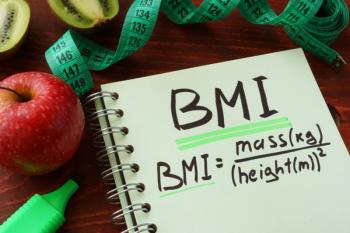
Patients With ILD Face Higher Burden of Fatigue, Excessive Daytime Sleepiness
Key Takeaways
- ILD patients show higher prevalence of fatigue (40.7%) and EDS (35.2%) compared to healthy controls, impacting quality of life.
- Fatigue in ILD patients correlates with exertional dyspnea, reduced pulmonary function, and increased anxiety and depression.
Patients with interstitial lung disease (ILD) experience significantly higher rates of fatigue and excessive daytime sleepiness than healthy individuals.
Patients with
The researchers explained that fatigue, defined as extreme and persistent tiredness, weakness, or exhaustion, increases disease burden and reduces patients’ quality of life. Various factors, like pain, depression, and dyspnea, influence fatigue.
Fatigue
However, previous studies on fatigue in patients with ILD mainly focused on those with IPF and sarcoidosis. Therefore, data on the prevalence of fatigue in patients with other ILD subtypes are scarce. Consequently, the researchers conducted a study to determine the prevalence and contributing factors of fatigue and EDS in patients with ILD.
They analyzed consecutive patients diagnosed with ILD at the Second Xiangta Hospital of Central South University in the Hunan province of China from March 2021 to November 2021. Conversely, healthy controls were recruited from the general population who underwent routine physical examinations at the hospital.
Various questionnaires were used to assess symptoms in analyzed patients. For example, the modified Medical Research Council (mMRC) dyspnea scale was used to assess the severity of dyspnea in patients’ daily lives. The scores are associated with the onset of depression and anxiety and quality of life in patients with ILD. With the Fatigue Assessment Scale (FAS), scores less than 22 indicated no fatigue, those between 22 and 34 indicated mild to moderate fatigue, and those 35 or greater indicated severe fatigue.
Conversely, the Epworth Sleepiness Scale (ESS) is widely used to measure daytime sleepiness. Scores can be divided into 4 groups: no daytime sleepiness (0-10), mild EDS (11-12), moderate EDS (13-15), and severe EDS (16-24). Therefore, a score of 11 points or higher indicates EDS.
Additionally, the Hospital Anxiety and Depression Scale (HADS) was used to assess anxiety and depression in hospitalized patients. This self-assessment questionnaire consists of 14 questions, with 7 dedicated to analyzing anxiety and 7 to depression; a score greater than 7 indicated suspected anxiety or depression.
Lastly, they used the modified Medical Research Short Form-36 (SF-36) to assess patients' quality of life. It analyzes 8 dimensions, each rated separately on a 0 to 100 scale; higher scores are associated with a better quality of life.
Based on these questionnaires and other data collected, the researchers compared the prevalence of fatigue and EDS between patients with ILD and healthy controls. They also analyzed the differences in clinical characteristics between patients with ILD with and without fatigue and/or EDS.
The study population consisted of 92 healthy controls and 108 patients with ILD. The ILD population included 52 patients (48.1%) with connective tissue disease–ILD (CTD-ILD), 26 (24.1%) with IPF, 14 (13.0%) with interstitial pneumonia with autoimmune features, and 16 (14.8%) with other ILD subtypes.
The researchers determined that the prevalence of fatigue was higher among patients with ILD (40.7%; 95% CI, 31.5-50.0) than in the healthy controls (9.8%; 95% CI, 3.7-15.9). Similarly, the prevalence of EDS was higher in patients with ILD (35.2%; 95% CI, 26.2-44.2) than in healthy controls (14.1%; 95% CI, 7.0-21.2).
Among patients with ILD, those with fatigue were more likely to have exertional dyspnea, as 70.0% scored a 2 or more on the mMRC vs 32.1% of those without fatigue (P < .001). Additionally, patients with fatigue had significantly worse pulmonary function and lower exercise capacity than those without fatigue.
Disease severity was also higher in patients with fatigue, along with the prevalence of EDS, anxiety, and depression. Consequently, their SF-36 scores indicated a severely lower quality of life than those without fatigue.
Among patients with ILD, the prevalence of depression and fatigue was higher in those with EDS than in those without EDS. As for quality of life, patients with EDS had slightly lower vitality and mental health than those without EDS.
The researchers acknowledged their study's limitations, including that it was a single-center study in China. Therefore, these findings may not be generalizable to all populations. Despite their limitations, the researchers expressed confidence in their findings and used them to provide treatment suggestions.
“These findings highlight the critical need for clinical emphasis on these symptoms to improve patient care and quality of life,” the authors concluded. “Pulmonary rehabilitation (PR) may improve the quality of life of ILD patients by improving cardiopulmonary function and exercise capacity and relieving fatigue and EDS.”
References
- Ouyang X, Shen Q, Zhou S, et al. Evaluating fatigue and excessive daytime sleepiness: a comparative analysis of prevalence and correlating factors in interstitial lung disease patients and healthy controls. Ann Med. 2024;56(1). doi:10.1080/07853890.2024.2398729
- Sharpe M. ABC of psychological medicine: fatigue. BMJ. 2002;325(7362):480-483. doi:10.1136/bmj.325.7362.480
- Bloem AEM, Mostard RLM, Stoot N, et al. Severe fatigue is highly prevalent in patients with IPF or sarcoidosis. J Clin Med. 2020;9(4):1178. doi:10.3390/jcm9041178
Newsletter
Stay ahead of policy, cost, and value—subscribe to AJMC for expert insights at the intersection of clinical care and health economics.















































